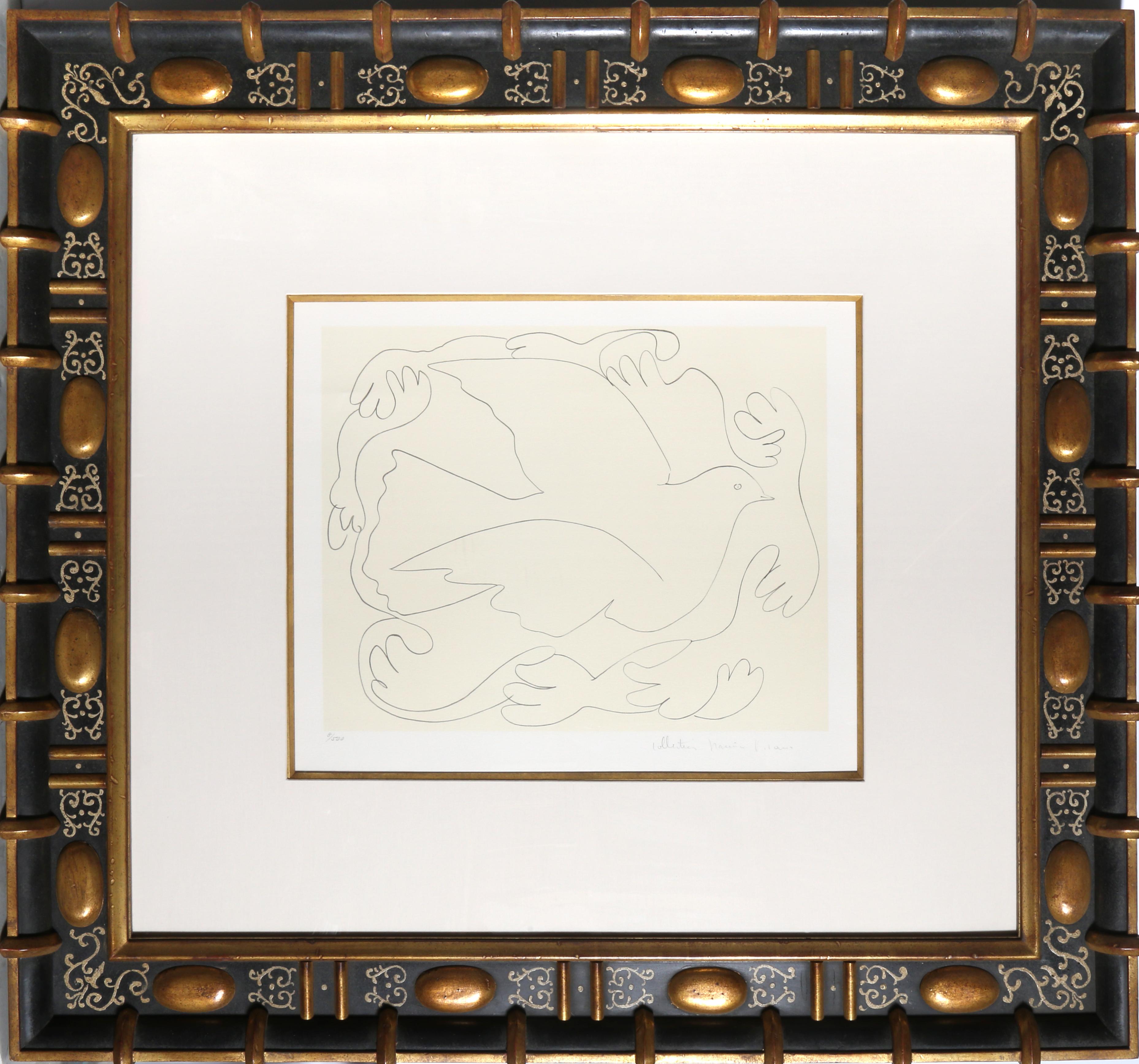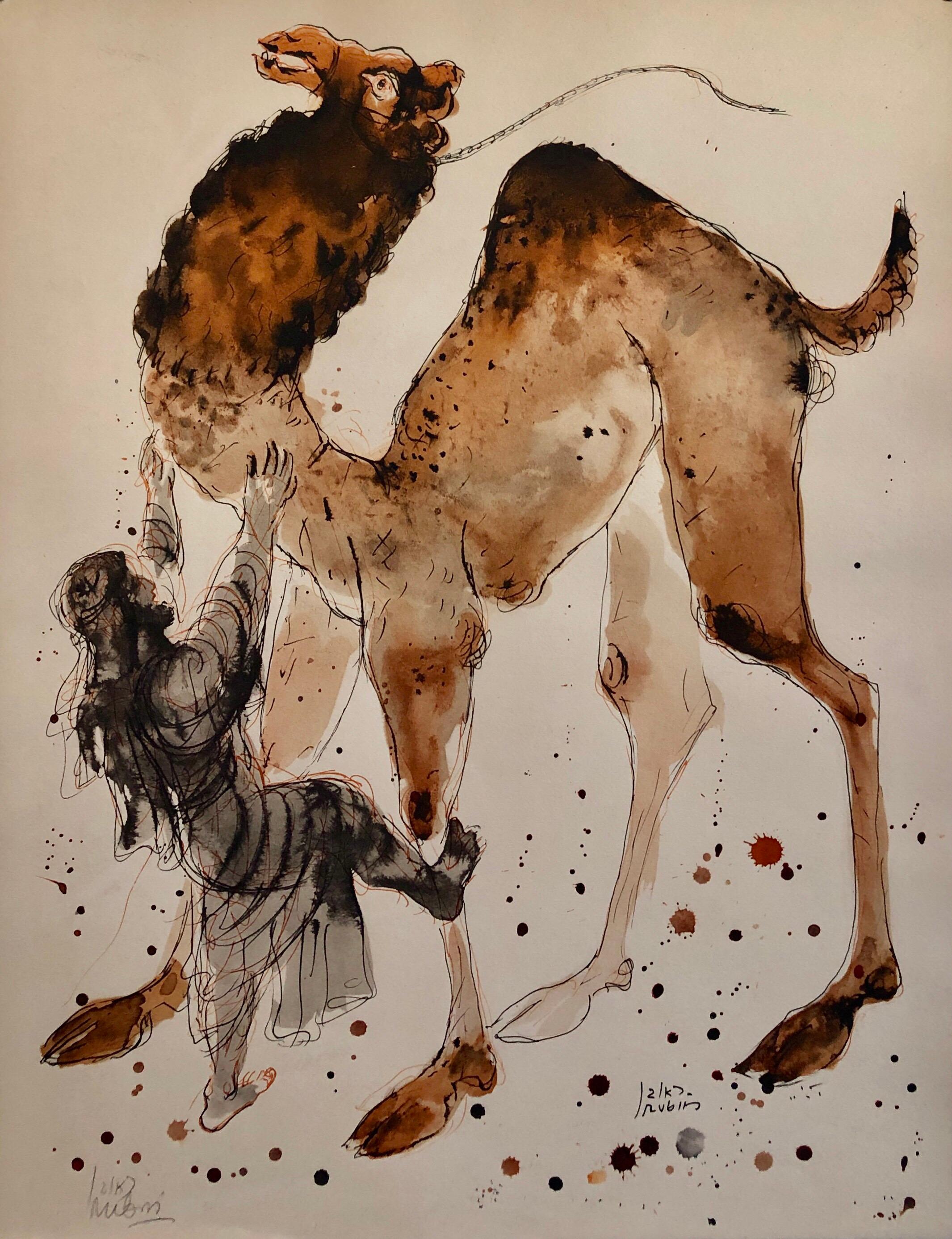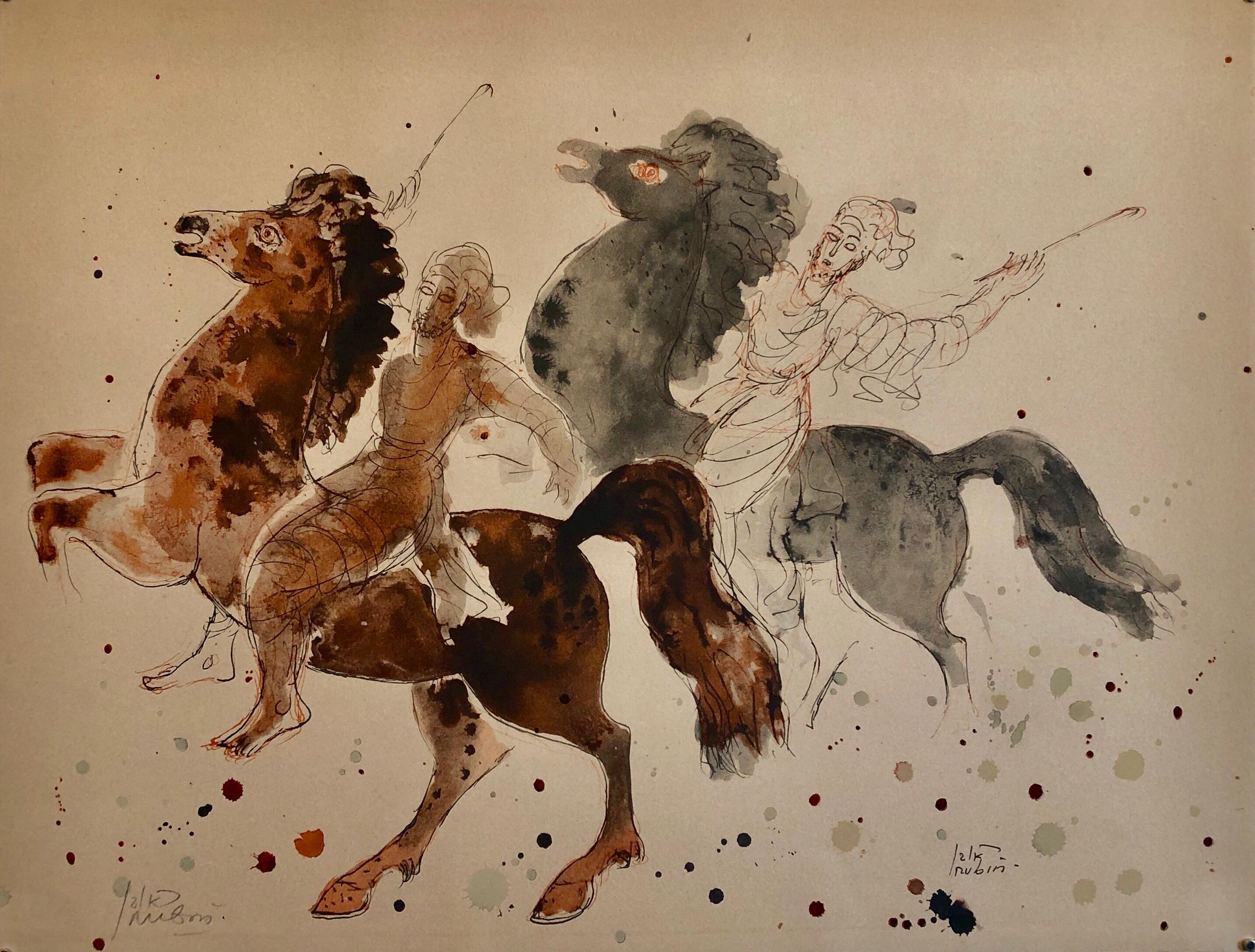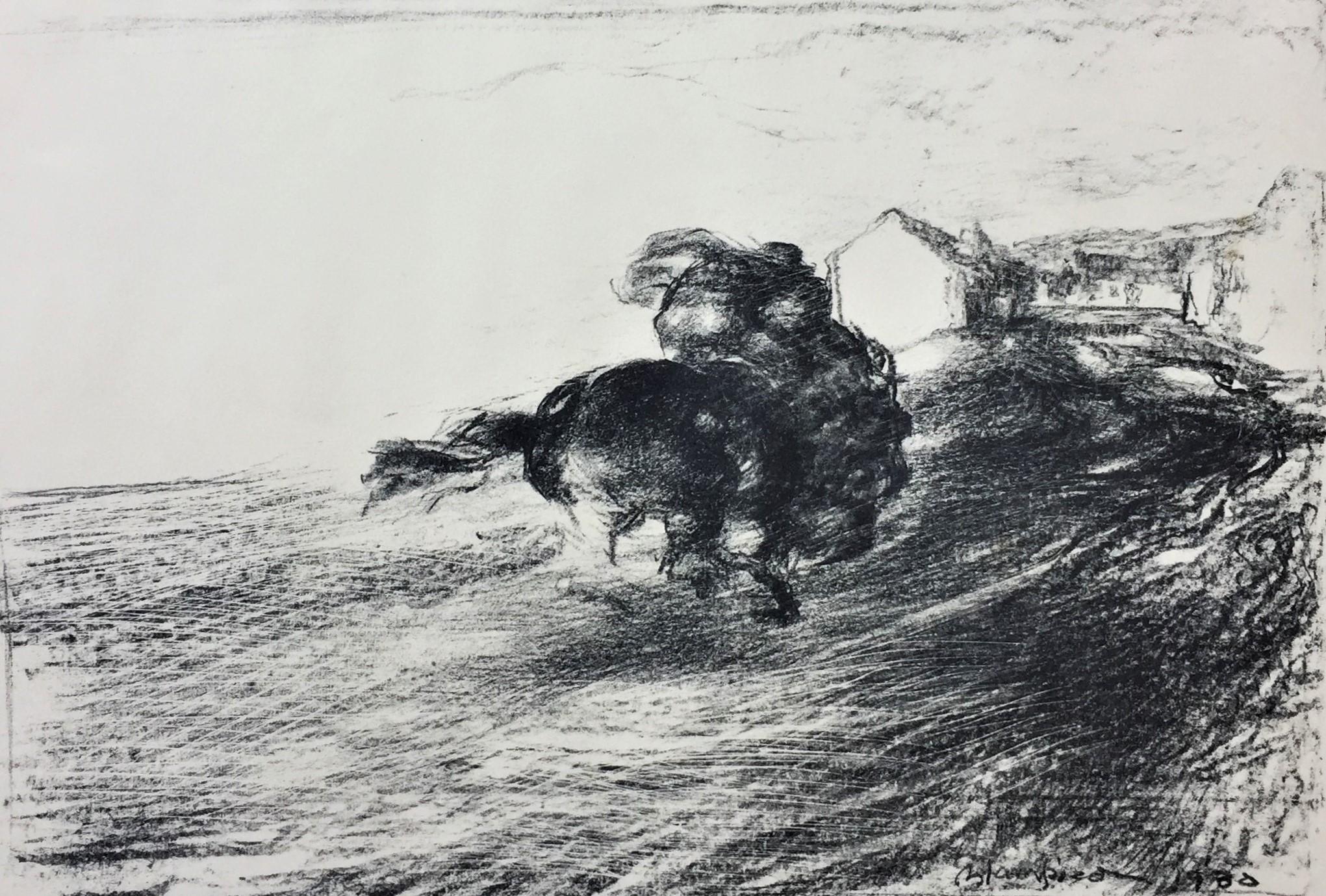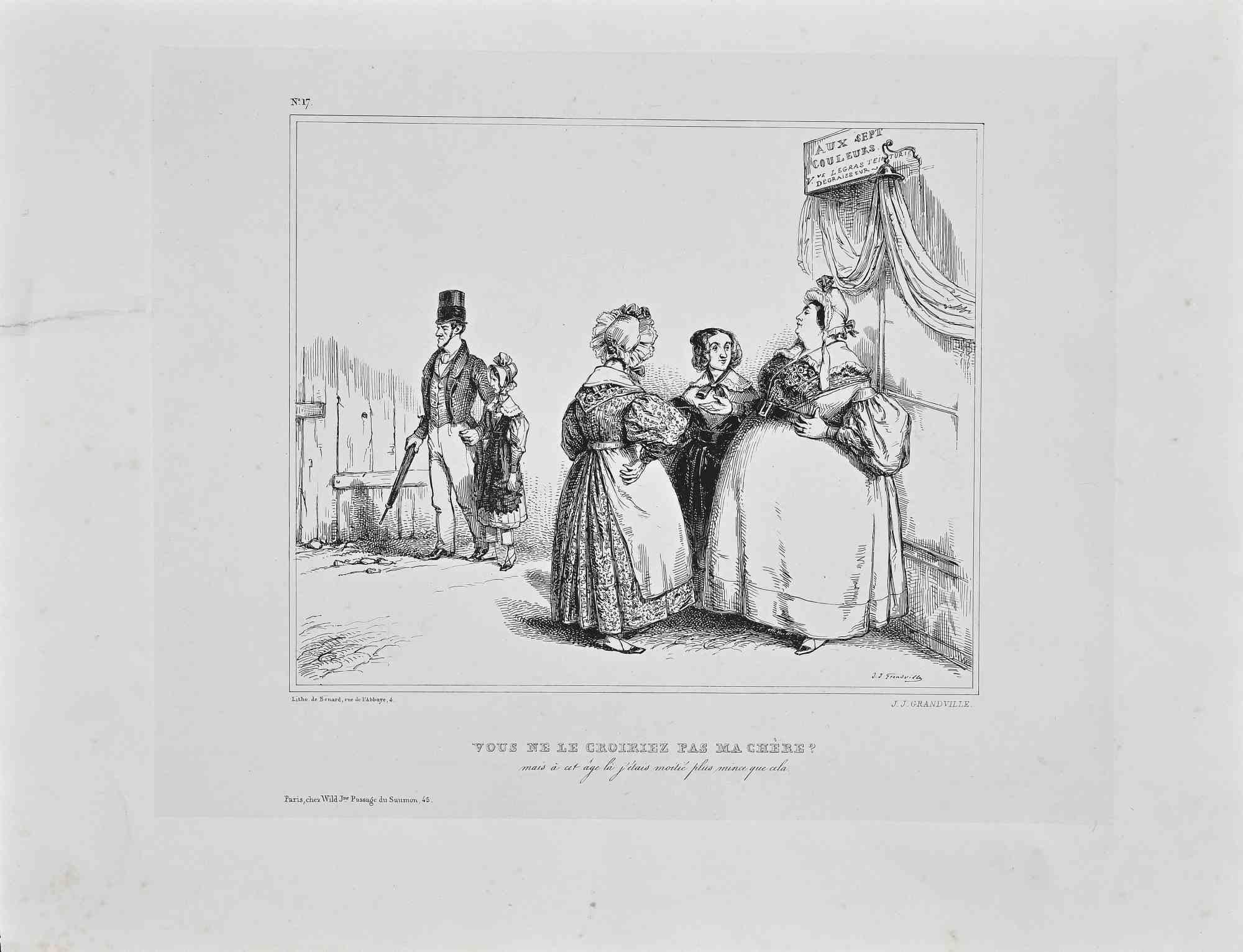Items Similar to The Frogs - Original Lithograph by Fabrizio Clerici - 1940 ca
Want more images or videos?
Request additional images or videos from the seller
1 of 5
Fabrizio ClericiThe Frogs - Original Lithograph by Fabrizio Clerici - 1940 ca1940 ca
1940 ca
About the Item
The Frogs is an enchanting lithograph realized in 1940 ca. by Fabrizio Clerici (1913-1993).
Hand-signed in pencil, on the lower right. Artist's proof "P.A", on the lower left.
The artwork represents two fantastic frogs toward the fictional world, a Surrealistic language of expression in full Clerici's style.
This artwork is in good condition.
Fabrizio Clerici ((1913-1993) : Italian painter and set designer. His painting, full of artistic and literary references, is imbued with the human anxieties of that alienating and hostile twentieth century that characterized the end of the second millennium.
An artist with a complex poetics and eclectic matrix, he was also an architect, set designer, costume designer, photographer and friend of some of the most important artists, critics, musicians and writers of the twentieth century.
Clerici has obtained national and international awards for his work and has been exhibited at MOMA, the Guggenheim Museum in New York, the Center Pompidou in Paris, the Pushkin Museum in Moscow, the Vatican Museums and in prestigious private and public collections.
Among his best known works are: The Minotaur publicly accuses his mother, who had deeply fascinated Salvador Dalí; Roman sleep (1955); The Confessions of Palermo (1954); Minerva phlegraea (1956-57); Le Krak des Chevaliers (1968). Alongside these, there are other works dedicated to mirages, buried cities, domestic archeology and rooms.
The latter, from the sixties, are characterized by the presence of figures from Egyptian mythology, such as the falcon god Horus and the ram sphinxes. The void, as an element and space of memory, prevails in the works of the seventies with the two famous paintings Corpus hermeticum and An instant after.
- Creator:Fabrizio Clerici (1913 - 1993, Italian)
- Creation Year:1940 ca
- Dimensions:Height: 13.59 in (34.5 cm)Width: 11.23 in (28.5 cm)Depth: 0.04 in (1 mm)
- Medium:
- Movement & Style:
- Period:
- Framing:Framing Options Available
- Condition:Insurance may be requested by customers as additional service, contact us for more information.
- Gallery Location:Roma, IT
- Reference Number:
About the Seller
4.9
Platinum Seller
These expertly vetted sellers are 1stDibs' most experienced sellers and are rated highest by our customers.
1stDibs seller since 2017
6,834 sales on 1stDibs
Typical response time: 3 hours
- ShippingRetrieving quote...Ships From: Rome, Italy
- Return PolicyA return for this item may be initiated within 14 days of delivery.
More From This SellerView All
- Vous ne le croirez pas ma chère? - Lithograph by J.J. Grandville - 19th CenturyLocated in Roma, ITVous ne le croirez pas ma chère? is an original lithograph on ivory-colored paper realized by J.J. Grandville in the 19th Century. Good Conditions. Jean Ignace Isidore Gérard (13 S...Category
1850s Modern Figurative Prints
MaterialsLithograph
- Poinies dans la Prairie - Lithograph - 20th CenturyLocated in Roma, ITPoinies dans la Prairie is an original Lithograph, realized by an anonymous artist in the 20th Century. The status of preservation Good. The artwork is de...Category
Late 20th Century Modern Figurative Prints
MaterialsLithograph
- Innocent Mrs. Cat In The Court - Lithograph by J.J Grandville - 1852By Jean Jeacques GrandvilleLocated in Roma, ITInnocent Mrs. Cat In The Court is an original lithograph on ivory-colored paper realized by J.J. Grandville from Scènes de la vie privée et publique des animaux, 1852. Published by M...Category
1850s Modern Animal Prints
MaterialsLithograph, Paper
- Chevaux en Liberté - l Lithograph - 20th CenturyLocated in Roma, ITChevaux en Liberté is an original Lithograph, realized by an anonymous artist in the late 20th Century. The status of preservation Good. The artwork is de...Category
Late 20th Century Modern Figurative Prints
MaterialsLithograph
- The Lawyer Bunny In A Hurry - Lithograph by J.J Grandville - 1852By Jean Jeacques GrandvilleLocated in Roma, ITThe Lawyer Bunny In A Hurry is an original lithographs on ivory-colored paper realized by J.J. Grandville from Scènes de la vie privée et publique des anima...Category
1850s Modern Animal Prints
MaterialsLithograph, Paper
- Elephant - Original Lithograph by Emmanuel Gondouin - 1930sLocated in Roma, ITElephant is an original lithograph realized in the early 1930s by Emmanuel Gondouin, (Versailles, 1883 - Parigi, 1934) The artwork is depicted through strong strokes and is part of...Category
1930s Modern Animal Prints
MaterialsLithograph
You May Also Like
- Etudes de Mains et Colombe II, Cubist Lithograph by Pablo PicassoBy Pablo PicassoLocated in Long Island City, NYA lithograph from the Marina Picasso Estate Collection after the Pablo Picasso painting "Etudes de Mains et Colombe". The original drawing was completed in 1952. In the 1970's after...Category
1980s Modern Animal Prints
MaterialsLithograph
- Modern Israeli Lithograph Reuven Rubin Views Of Israel Judaica Camel RiderBy Reuven RubinLocated in Surfside, FLLithograph printed by Chez Daniel Jacomet, Paris, France 1960 offset lithograph in colors on Arches, signed in crayon on the justification sheet (this auction is just for the one lithograph pictured as the 1st photo, the justification sheet with the original drawing is just included for provenance and is not part of this sale), on Arches deckle edged paper. limited edition of 250. plate signed and hand signed in pencil. Israeli views Lithograph by Israeli Master. Reuven Rubin 1893 -1974 was a Romanian-born Israeli painter and Israel's first ambassador to Romania. Rubin Zelicovici (later Reuven Rubin) was born in Gala?i to a poor Romanian Jewish Hasidic family. He was the eighth of 13 children. In 1912, he left for Ottoman-ruled Palestine to study art at Bezalel Academy of Art and Design in Jerusalem. Finding himself at odds with the artistic views of the Academy's teachers, he left for Paris, France, in 1913 to pursue his studies at the École Nationale Supérieure des Beaux-Arts. At the outbreak of World War I, he was returned to Romania, where he spent the war years. In 1921, he traveled to the United States with his friend and fellow artist, Arthur Kolnik, with whom he had shared a studio in Cernovitzu. In New York City, the two met artist Alfred Stieglitz, who was instrumental in organizing their first American show at the Anderson Gallery.Following the exhibition, in 1922, they both returned to Europe. In 1923, Rubin emigrated to Mandate Palestine. Rubin met his wife, Esther, in 1928, aboard a passenger ship to Palestine on his return from a show in New York. She was a Bronx girl who had won a trip to Palestine in a Young Judea competition. He died in 1974 Artistic career Joseph Zaritsky...Category
1960s Modern Figurative Prints
MaterialsLithograph, Offset
- Modern Israeli Lithograph Reuven Rubin Views Of Israel Judaica Horses, RidersBy Reuven RubinLocated in Surfside, FLLithograph printed by Chez Daniel Jacomet, Paris, France 1960 offset lithograph in colors on Arches, signed in crayon on the justification sheet (this auction is just for the one lithograph pictured as the 1st photo, the justification sheet with the original drawing is just included for provenance and is not part of this sale), on Arches deckle edged paper. limited edition of 250. plate signed and hand signed in pencil. Israeli views Lithograph by Israeli Master. Reuven Rubin 1893 -1974 was a Romanian-born Israeli painter and Israel's first ambassador to Romania. Rubin Zelicovici (later Reuven Rubin) was born in Gala?i to a poor Romanian Jewish Hasidic family. He was the eighth of 13 children. In 1912, he left for Ottoman-ruled Palestine to study art at Bezalel Academy of Art and Design in Jerusalem. Finding himself at odds with the artistic views of the Academy's teachers, he left for Paris, France, in 1913 to pursue his studies at the École Nationale Supérieure des Beaux-Arts. At the outbreak of World War I, he was returned to Romania, where he spent the war years. In 1921, he traveled to the United States with his friend and fellow artist, Arthur Kolnik, with whom he had shared a studio in Cernovitzu. In New York City, the two met artist Alfred Stieglitz, who was instrumental in organizing their first American show at the Anderson Gallery.Following the exhibition, in 1922, they both returned to Europe. In 1923, Rubin emigrated to Mandate Palestine. Rubin met his wife, Esther, in 1928, aboard a passenger ship to Palestine on his return from a show in New York. She was a Bronx girl who had won a trip to Palestine in a Young Judea competition. He died in 1974 Artistic career Joseph Zaritsky...Category
1960s Modern Figurative Prints
MaterialsLithograph, Offset
- Modern Israeli Lithograph Reuven Rubin Views Of Israel Judaica Crowing RoosterBy Reuven RubinLocated in Surfside, FLLithograph printed by Chez Daniel Jacomet, Paris, France 1960 offset lithograph in colors on Arches, signed in crayon on the justification sheet (this auction is just for the one lithograph pictured as the 1st photo, the justification sheet with the original drawing is just included for provenance and is not part of this sale), on Arches deckle edged paper. limited edition of 250. plate signed and hand signed in pencil. Israeli views Lithograph by Israeli Master. Reuven Rubin 1893 -1974 was a Romanian-born Israeli painter and Israel's first ambassador to Romania. Rubin Zelicovici (later Reuven Rubin) was born in Gala?i to a poor Romanian Jewish Hasidic family. He was the eighth of 13 children. In 1912, he left for Ottoman-ruled Palestine to study art at Bezalel Academy of Art and Design in Jerusalem. Finding himself at odds with the artistic views of the Academy's teachers, he left for Paris, France, in 1913 to pursue his studies at the École Nationale Supérieure des Beaux-Arts. At the outbreak of World War I, he was returned to Romania, where he spent the war years. In 1921, he traveled to the United States with his friend and fellow artist, Arthur Kolnik, with whom he had shared a studio in Cernovitzu. In New York City, the two met artist Alfred Stieglitz, who was instrumental in organizing their first American show at the Anderson Gallery.Following the exhibition, in 1922, they both returned to Europe. In 1923, Rubin emigrated to Mandate Palestine. Rubin met his wife, Esther, in 1928, aboard a passenger ship to Palestine on his return from a show in New York. She was a Bronx girl who had won a trip to Palestine in a Young Judea competition. He died in 1974 Artistic career Joseph Zaritsky...Category
1960s Modern Figurative Prints
MaterialsLithograph, Offset
- Fetching the Doctor (In Haste for the Doctor)By Edmund BlampiedLocated in Storrs, CTFetching the Doctor (In Haste for the Doctor) 1930. Lithograph. Appleby Lithographs 24. 11 x 16 (sheet 13 3/8 x 18 1/2). Edition 50. Illustration used as a ...Category
Early 20th Century Modern Animal Prints
MaterialsLithograph
- 1959 Israeli Avraham Ofek Leviathan Modernist Lithograph, Bull, Bezalel SchoolBy Avraham OfekLocated in Surfside, FLBright, vibrant purple, red and black bull or ox. 1959 Lithograph "Bull". This was from a portfolio which included works by Yosl Bergner, Menashe Kadishman, Yosef Zaritsky, Aharon Kahana, Jacob Wexler, Moshe Tamir and Michael Gross. Avraham Ofek (August 14, 1935 – January 13, 1990 was an Israeli sculptor, muralist, painter and printmaker. Avraham Ofek was born in Burgas, Bulgaria. He immigrated to Israel in 1949, and he lived in Ein Hamifratz, a kibbutz near Haifa. He studied at the Academy of Fine Arts in Florence, as well as in Spain and in London, and later taught art in Jerusalem before being appointed head of the Art Department at the University of Haifa. In 1975, he established the Leviathan Group school together with Michail Grobman and Shmuel Ackerman (prominent Post Soviet avant garde Russian artists), seeking to combine symbolism, metaphysics and Judaism in an all-inclusive “national style.” He represented Israel at the Venice Biennale in 1972. Avraham Ofek's early paintings of landscape were at both lyrical and rugged; later in his career the landscape was undefined and receded into the background. Near the end of his life, the landscape of Jerusalem became an important motif, reflecting loss and despair. Many of Ofek's landscapes convey a sense of alienation and solitude, as well as nostalgia for the city of his birth, Sofia. His mural paintings and sculpture can be seen across Israel, notably at Kfar Uria and the Central Post Office Building (Jerusalem). His sculpture "The Binding of Isaac...Category
1950s Modern Animal Prints
MaterialsLithograph
